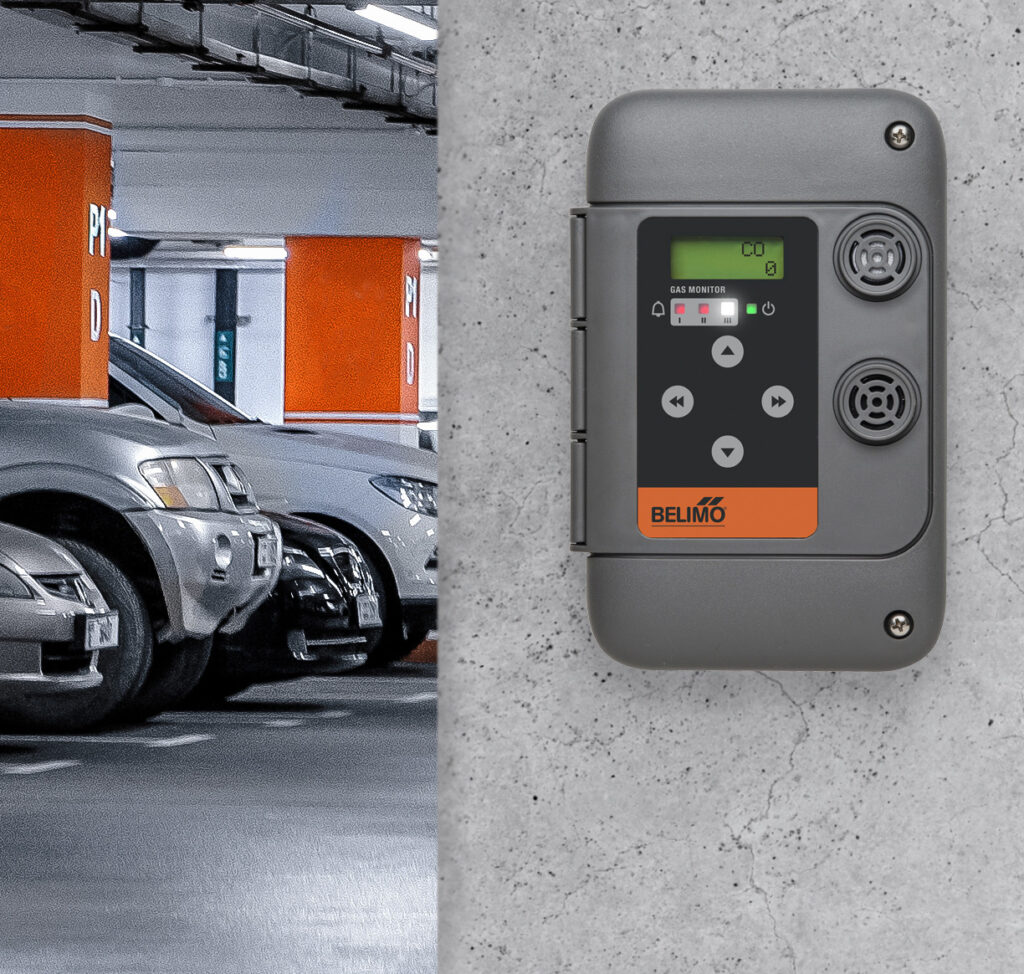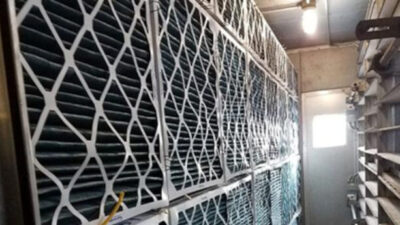Gas monitors are crucial in detecting hazardous gas levels, increasing occupant safety and maintaining compliance with building codes. With UL certification, HVAC professionals can ensure these monitors reach the highest standards.

Learning objectives:
- Understand the role of UL certification in enhancing the safety and reliability of gas monitors used in the HVAC industry.
- Learn how UL 2075 and ULC-S588 standards ensure gas detection systems meet stringent performance criteria.
- Identify the benefits of using UL-certified gas monitors for compliance and liability reduction.
- Recognize the impact of UL-certified gas monitors on indoor air quality and energy efficiency.
Indoor air quality (IAQ) is a growing concern across various industries, especially in spaces where harmful gases, such as carbon monoxide (CO) and nitrogen dioxide (NO₂), can accumulate. Monitoring and controlling these gases is vital to ensure the health and safety of building occupants, particularly in enclosed environments like parking garages, maintenance facilities and tunnels.
To meet the rising demand for dependable gas detection, the heating, ventilation and air conditioning (HVAC) industry relies heavily on rigorous certification standards to ensure that gas monitors function effectively in real-world conditions. Among these, the Underwriters Laboratories (UL) 2075: Gas and Vapor Detectors and Sensors and ULC-588 are two of the most critical benchmarks for evaluating gas detection systems. These standards set forth stringent performance, reliability and safety requirements, and are widely recognized in the United States and Canada.
This article explores the significance of UL certification for gas monitors, the key elements of the UL 2075 and ULC-S588 standards, and how these certifications contribute to the HVAC industry’s goals of enhancing safety and maintaining compliance with regulatory requirements.
What is UL certification?
UL is an independent safety science organization that creates standards to ensure products meet stringent safety, performance and compliance requirements. The UL certification process includes rigorous testing by a Nationally Recognized Testing Laboratory (NRTL) to verify that products adhere to the established safety standards.
Products that achieve the “UL Listed” designation have undergone rigorous testing and evaluation by an independent NRTL to ensure they meet the specified performance criteria and safety standards. While some products on the market may be labeled as “UL Recognized” or “UL Approved,” only the designation of “UL Listed” indicates the product was independently reviewed and deemed to be in full compliance with the standard.

Why UL certification matters for gas monitors
The HVAC industry plays a critical role in maintaining indoor air quality. In spaces where vehicles operate or fossil fuel equipment is in use, CO and NO₂ can accumulate rapidly, creating a hazardous environment if not properly monitored and controlled. This is where UL certification becomes essential.
Ensuring safety and compliance: Gas monitors certified under UL standards must meet strict performance criteria to reliably detect harmful gases and alert occupants to unsafe levels. Meeting UL standards aligns monitors with building codes and industry regulations, which helps minimize building owners’ liability.
Enhancing product reliability: The testing involved in achieving a UL Listed certification ensures that gas monitors can withstand various environmental challenges, such as temperature fluctuations, humidity and electrical interference. This level of durability is crucial in ensuring the long-term reliability of the monitoring systems installed in critical areas.
Building stakeholder trust: UL Listed gas monitors offer peace of mind that the devices will perform as expected for facility managers and engineers. This is particularly important in spaces like hospitals, schools and other commercial buildings where occupant safety is a top priority.
Understand UL 2075: Gas and Vapor Detectors and Sensors
The UL 2075 standard ensures that gas detection systems are safe, effective and durable. This standard primarily applies to CO and NO₂ detectors, making it highly relevant for industries where these gases are prevalent.
Key elements of UL 2075 include:
-
End-of-life (EOL) signaling: The standard requires gas monitors to have EOL indicators that notify users when the sensor is no longer functional. This feature prevents users from relying on expired or ineffective devices, thus ensuring continuous protection.
-
Sensitivity and accuracy testing: UL 2075 mandates rigorous testing to confirm that detectors can accurately measure gas concentrations even at low levels. This is crucial for preventing exposure to gases that can have severe health impacts over time.
-
Environmental stress testing: Gas monitors certified under UL 2075 must demonstrate reliable performance under variable environmental conditions, such as high humidity, temperature changes, and voltage fluctuations. These tests ensure that the devices can operate effectively in real-world applications where conditions are often less than ideal.
Improved indoor air quality management
By adhering to UL and ULC standards, gas monitors play a pivotal role in improving IAQ. This is particularly important in spaces where people may be exposed to vehicle exhaust or combustion byproducts. High levels of CO and NO₂ can lead to health issues like headaches, dizziness, respiratory problems and even fatalities in extreme cases.
HVAC systems equipped with UL-certified gas monitors can detect elevated levels of harmful gases and automatically adjust ventilation rates to reduce concentrations, ensuring a healthier indoor environment. This proactive approach both protects occupants and enhances the overall efficiency of HVAC systems by reducing unnecessary energy consumption.

Supporting compliance with building codes
The International Building Code requires that buildings use UL 2075 Listed CO monitors, detectors, and sensors in all U.S. states. The International Mechanical Code mandates that all CO and NO₂ monitors, detectors and sensors in enclosed parking structures be UL 2075 Listed. By installing UL-certified monitors, facility managers can ensure compliance with these codes, thereby avoiding potential fines or legal issues related to non compliance.
Reducing liability for building owners
For building owners and facility managers, using certified gas detection systems reduces the risk of liability associated with potential gas leaks. In the event of an incident, having UL-certified devices installed provides a strong defense, demonstrating that industry best practices were followed to safeguard occupant safety.
Leveraging certification for enhanced safety
While this article focuses on the importance of UL certification in general, it’s worth noting that some companies in the industry, such as Belimo, have made significant strides in achieving comprehensive certifications. For instance, Belimo’s CO, NO₂, and combo CO + NO₂ gas monitors are fully certified under both UL 2075 and ULC-S588 standards, ensuring full compliance with industry benchmarks for safety and reliability. These monitors can be used in conjunction with an HVAC system or building management systems, and they can also function as standalone devices. This level of certification demonstrates how manufacturers can support HVAC professionals in meeting the highest standards of safety and performance.
Overall importance of UL standards
As the HVAC industry continues to prioritize indoor air quality and occupant safety, the role of UL certification in gas detection systems cannot be overstated. Standards like UL 2075 and ULC-S588 ensure that gas monitors meet stringent requirements for accuracy, durability and performance, providing critical protection in environments where harmful gases are a concern.
For facility managers, engineers and building owners, investing in UL-certified gas monitors is a proactive step toward creating safer indoor environments. By choosing devices that have undergone rigorous third-party testing, stakeholders can be confident in the reliability of their air quality monitoring systems, ensuring compliance with regulations and safeguarding the well-being of building occupants.
In the end, the pursuit of higher standards through certifications like UL 2075 and ULC-S588 not only aligns with regulatory requirements but also contributes to the broader goal of enhancing public health and safety in indoor spaces.



